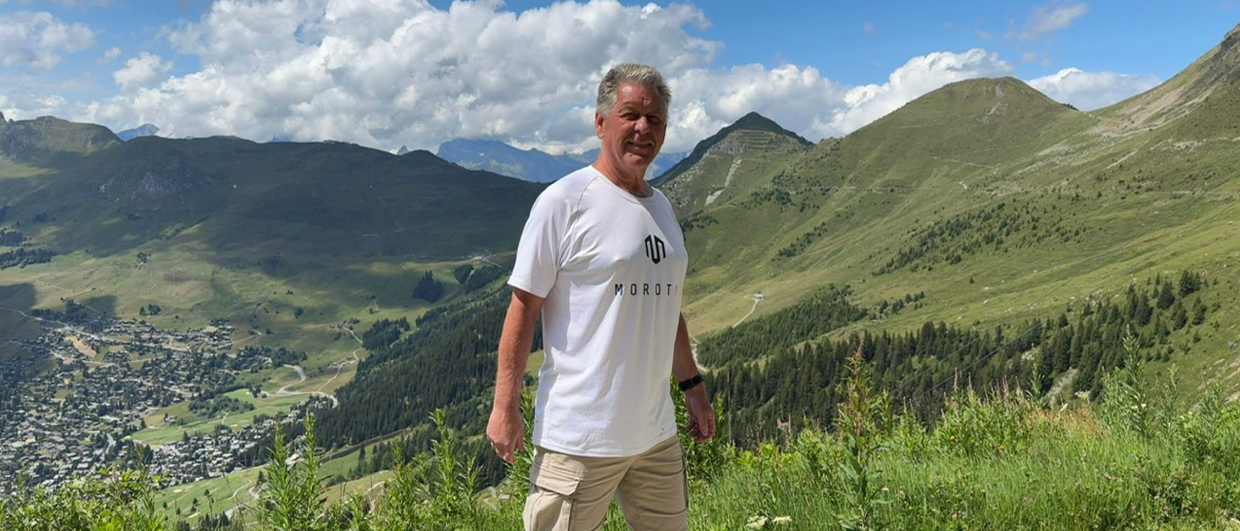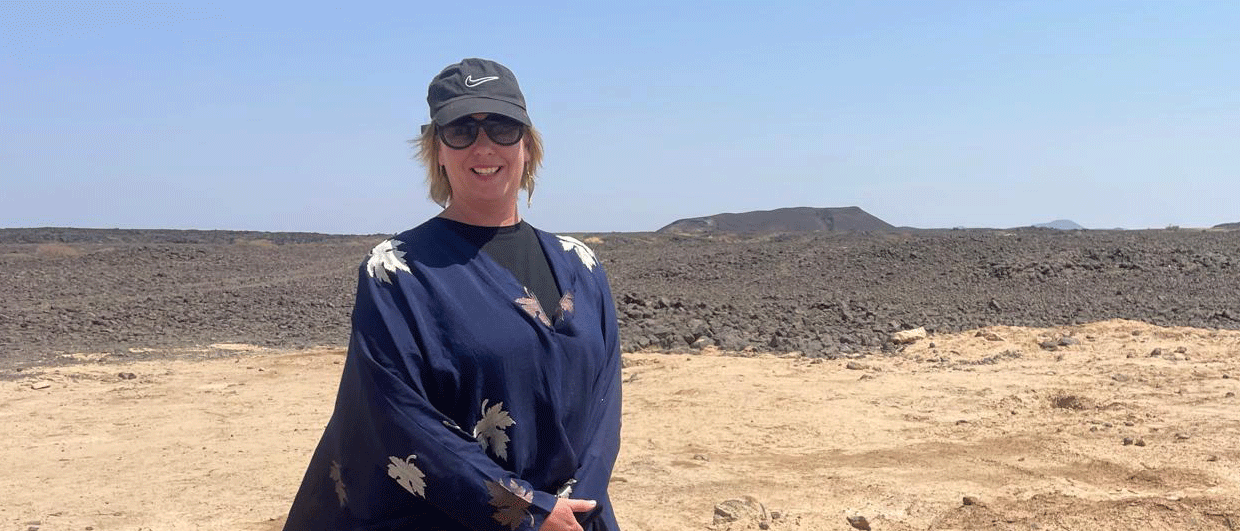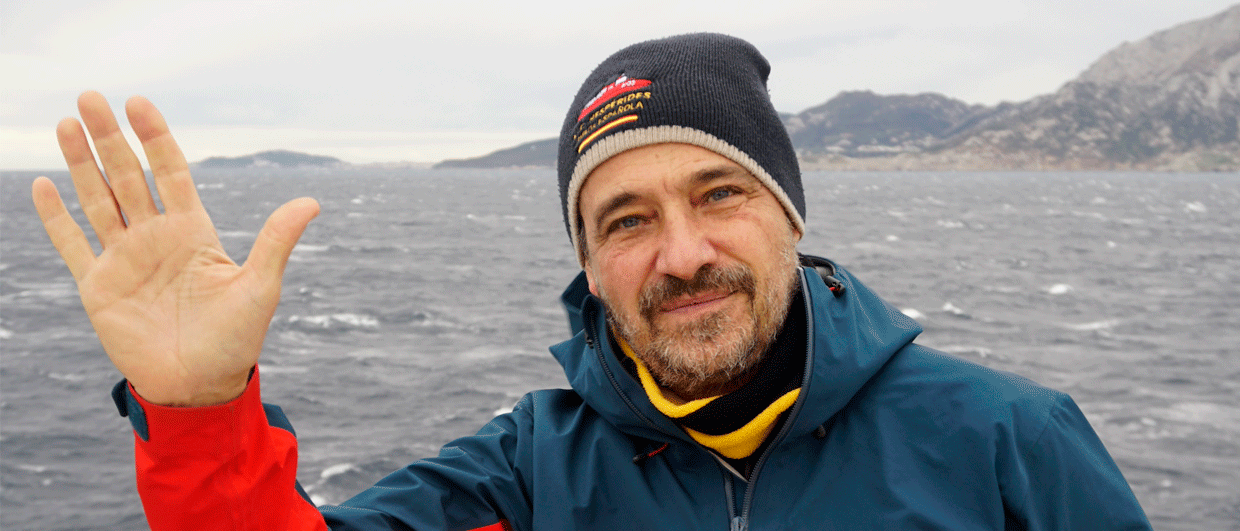When thinking about exploration geology in the oil and gas sector, most people will envisage going to places unknown, map the big bumps, and get them drilled. That’s not how Tom Dreyer’s career in exploration went. “I have never been a man for frontier exploration,” he tells me when we meet on a warm day in August. Instead, Tom made a career doing rather the opposite; near-field exploration. “It suited me more,” he says, “given my background in sedimentology and reservoir studies.”
Inspired by a new industry
Growing up in Norway in the 1970s and 1980s, there was no escape from what was happening in Norwegian waters. “The news about the discoveries inspired me,” says Tom. “Yet, I wasn’t particularly interested in geology as a child, but I rather had a broad fascination for science and the natural world.”
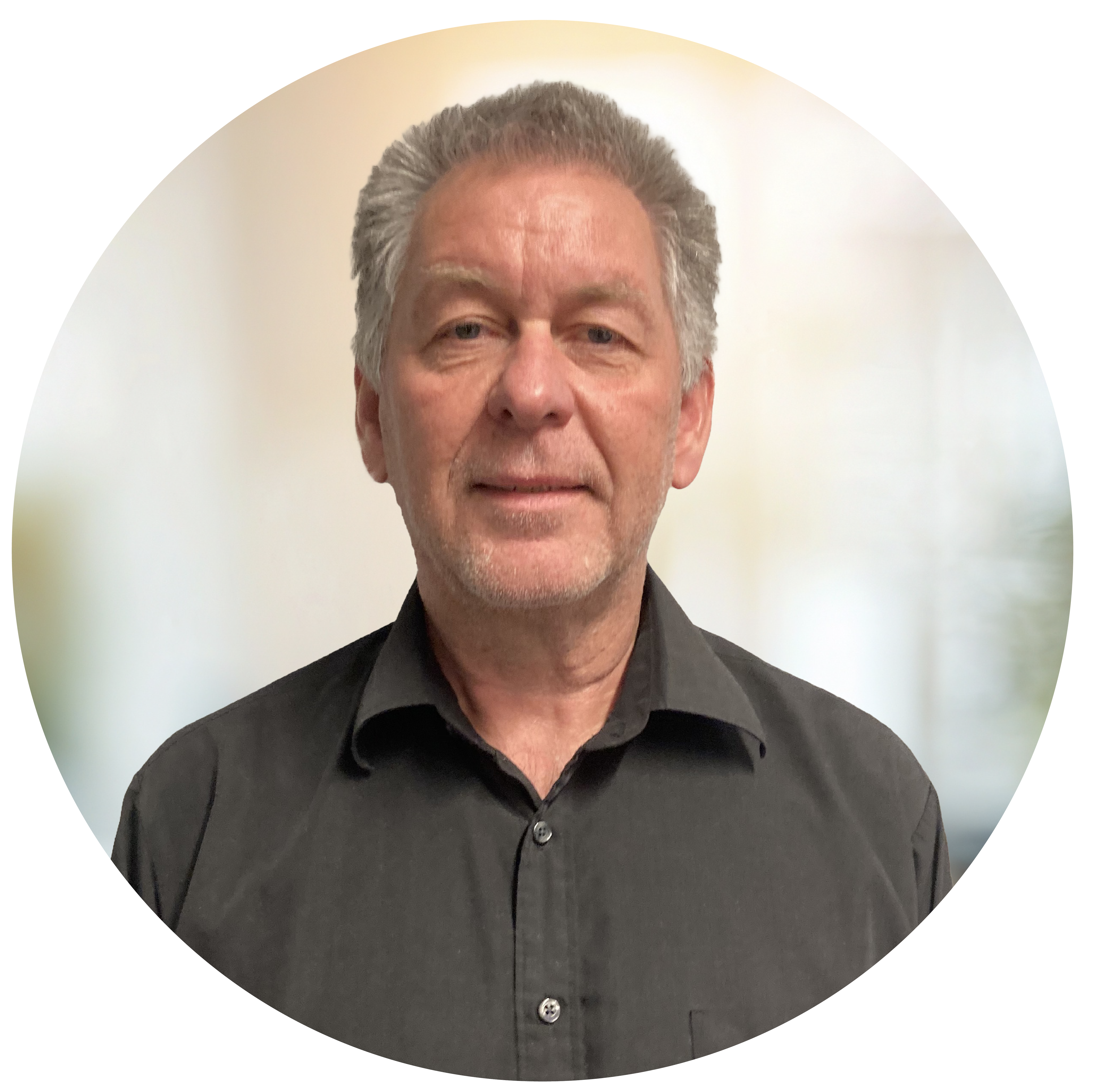
However, once he started studying geology at university, it quickly got him hooked. “The thought of being able to reconstruct ancient landscapes by studying rocks fascinated me,” he says. He quickly became very studious, and an academic career seemed to lie ahead for him.
After doing a PhD on “poorly exposed” rocks in eastern Norway, Tom contemplated doing a postdoc on well-exposed outcrops in Egypt. But then, Statoil called in 1985, asking him to perform a study on the major Statfjord field for about a year. He decided to do it, thinking that the path to becoming a sedimentology professor was still wide open anyway.
Statoil had just taken over operatorship of the Statfjord field from Mobil at the time. “I joined a very enthusiastic team,” says Tom, “Statfjord was the first field that Statoil was going to operate. You can imagine the excitement that brought.”
For the first nine months, he worked on describing Triassic and Lower Jurassic cores of the Statfjord Formation, the secondary reservoir unit in the field, and correlating these to well logs. “I had never seen a well log before,” he laughs.
Goodbye Statoil, goodbye academia
Whilst Tom was working on Statfjord in Stavanger, he received a call from the research centre of Norsk Hydro in Bergen, his hometown, asking if he wanted to join the team as a sedimentologist.
It was the time when sequence stratigraphy was emerging, as well as the development of large-scale depositional models. In other words, an exciting time to join a company that was at the forefront of the discovery of what the North Sea subsurface was about.
The working conditions were excellent. “We were allowed to spend a lot of our time on field work and looking at cores, to create depositional models for fields Norsk Hydro was operating. All in all, I think I did about a full year of field work between 1987 and 1994,” Tom adds. “It was a great learning experience. I must have visited the Spanish Pyrenees more than 50 times in total.”
A SAD STORY WITH A POSITIVE OUTCOME
In 1987, Hydro told people in the exploration department, which had a branch in Bergen at the time, to pack up their bags and relocate to Oslo. “I had just joined the company at the time, and seeing grown-ups cry made a bit of an impression on me,” Tom says. “It took almost 20 years before I was able to move this team back to Bergen, where it belonged. The reason for that was simple; the research centre was still in Bergen, as well as the production geologists. By moving the team back to Bergen, we had better access to the people running the fields as well as those doing the research. I still regard that as a big achievement of my career.”
And whilst in the Norsk Hydro research centre, Tom did not entirely forget about his academic interests. He kept publishing papers in scientific journals, which also allowed him to obtain a Doctoral Philosophy degree in 1995. “That degree doesn’t exist anymore,” Tom says, “but given that I had published more than ten papers, I qualified for it.”
“Looking back at those years from joining Norsk Hydro in 1986 to receiving my final degree in 1995, I was a total sedimentology freak,” laughs Tom. “I had no interest in exploration at all, and was very happy to go very deep into understanding the sedimentary record instead. And in a way, the environment at Norsk Hydro was superior to academia; there were always funds to do fieldwork, whilst I could still publish my work.”
Ready for the bigger picture
During those ten years at Norsk Hydro, Tom very much focused on reservoir characterisation at an outcrop analogue scale. “But then,” he says, “I started wondering how all these architectural elements were organised at a larger scale, and I began to look more into seismic data.”
This led to a number of years of doing seismic geomorphology, in combination with field work that also focused on larger-scale organisation of facies associations and sequence stratigraphy.
It was in that period that Tom also made his first moves into exploration. “I was tasked with developing facies models, not for existing fields, but for undrilled prospects,” he says. “It was the first time I looked at prospectivity, trying to come up with a model without having any control points other than some seismic lines and a few nearby wells.”
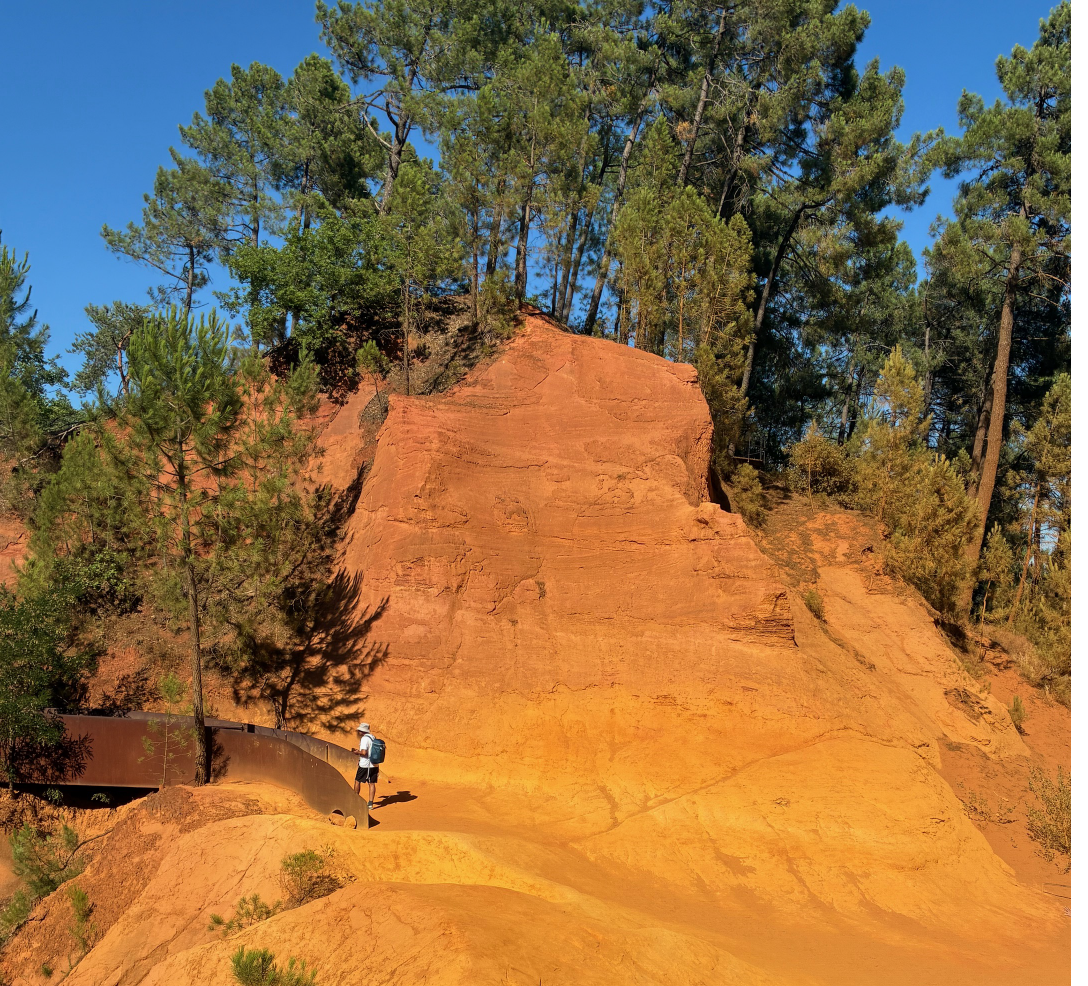
Thinking about people skills
The work by Tom did not go unnoticed at Norsk Hydro, and management wanted him to switch to exploration entirely. “I wasn’t convinced,” he says, “but I agreed on a trial period for a few months in Oslo, where the company had its exploration department.”
It turned out to be a success. “I found it interesting,” says Tom, “and therefore I was happy to accept a permanent position as exploration manager in Oslo in 2004. I had the benefit of having a very enthusiastic manager, Bjørn Rasmussen, who believed in me and made the transition to exploration quite smooth.”
Yet, it didn’t feel like the most natural match. “I’m a bit of an introvert and a thinker,” Tom continues, “so I did wonder how I could make people thrive in my team.”
But he succeeded through the ability to spot what people are good at. “I strongly believe that everybody has something to bring to the table, and I’ve always tried to channel that positively. This came with taking the time to get to know people and talk to them about what they were keen to do. Ultimately, I wanted a collective that worked together rather than a group of individuals protecting their own data. At the same time, I also tried to protect the people in my team from “noise” coming from the higher echelons in management that can sometimes cause unnecessary stress,” he adds.
Tom’s solid background in geoscience also presented him with the ability to technically steer people when needed. “I had done all these geoscience things myself and was therefore able to sit next to someone to discuss the technicalities and provide feedback and recommendations. I believe that this has saved the group a lot of time in some cases.”
A REAL SUPPORTER OF DOING THE GROUNDWORK FIRST
Even though Tom spent significant parts of his exploration budgets on acquiring new seismic data, realising its potential to unlock subtle traps, he is also well-known for being a healthy sceptic towards putting too much focus on DHI’s. Instead, Tom has always been an advocate of doing a full-scale geological prospect assessment using all available data. “I have always tried to prevent geophysicists from taking over the show completely through only focusing on prospects with a clear DHI,” he says. “Look at the giant Johan Sverdrup discovery; it had no DHI whatsoever. Of course, DHI’s should not be ignored, they are part of our toolkit, as is EM, but not more than that.”
A string of discoveries
Tom’s career got a further boost in 2007, after the Norsk Hydro and Statoil merger. Following an interview with Tim Dodson, he became VP of Exploration and started managing teams in Stavanger and Bergen tasked with finding new volumes close to existing fields.
Whilst some people may think near-field exploration on the Norwegian Shelf is something of recent years, it was already in the 2000s that the first deliberate push was made to prove additional near-field volumes, driven by the fact that some of the big fields had come off plateau around that time.
“Near-field exploration suited me,” Tom says. “I have always been interested in better understanding what happens between producing fields. It’s probably driven by my background in reservoir geology and outcrop studies; it was that scale of geology that really intrigued me. More than doing the frontier work.”
And Tom proved that he had a talent for finding sweet spots close to existing assets. Between 2007 and 2009, driven by combining the best blocks of both the Statoil and Norsk Hydro portfolios, his team made 15 commercial discoveries. “It was a very hectic time,” he says, “it was almost like every second well we drilled during those years was a discovery.”
But the hectic nature of the job was partly self-inflicted. “My remit was to look for volumes around the Gullfaks, Oseberg and Sleipner fields, but I also took the liberty to explore other areas in the North Sea,” Tom laughs.
Exploration in syn-rift deposits
Tom’s first exploration success was an excellent example of how attractive near-field exploration can be. We are in the Fram area, where the Upper Jurassic Sognefjord Formation is the reservoir for the Fram field, discovered in 1990.
Within Fram, the Sognefjord sands have a shallow marine origin, but it was known that immediately west of Fram, the basin deepened at the time, forming an important depocenter.
“We expected deep-marine sands in that area,” says Tom, “and we planned a well to drill a prospect in there, H-north.” Initially, the results did not look great. Less than 10 m of pay in the main sand, in addition to a thin 1 m oil column in a secondary and unprognosed sand. All in all, it didn’t look too attractive.
“However, in the seismic we could demonstrate that the thin sand with 1 m pay was thickening towards the west, to an extent that within 200 m from the well, we were predicting more than 50 m of sand. I then asked the drillers if they could prepare a sidetrack and test the area to the west,” Tom continues.
Within three days, the drillers put together a plan to complete the sidetrack, and it was quickly approved by management. The sidetrack (35/11-15S) was drilled and indeed found a sizeable oil column in the predicted 50 m sand, 200 m away from the well that initially found the same sand to be 1 m in thickness.
“This clearly demonstrated the lateral variability in these syn-rift deposits,” says Tom. “It is the area where we found the thickest accumulation of Upper Jurassic sands altogether, in the region of 180 m of stacked turbiditic sands.”
A Triassic sweet spot
“One of my most fascinating exploration wells was the one we drilled just west of the giant Oseberg field in the North Sea in 2009,” says Tom. “From Oseberg going westwards, a complex of terraces rapidly plunges into the deeper parts of the Viking Graben. It is one of those terraces that were on the radar for drilling, even though the quality of our seismic data we had at the time did not allow us to make a proper inference on what the likely target age would be.”
The team expected the Statfjord Formation to be the main reservoir here, but it turned out that it was missing altogether due to erosion. The slightly older Lunde and Lomvi formations were found in 30/5-3S instead. Initially, that did not seem good news, because these formations had never been proven to hold commercial quantities of hydrocarbons so far. However, and here is the interesting part of the story, gas was found at a depth of around 4,000 m, in a good-quality reservoir.
“It was a good old facies change that was responsible for the better-than-expected reservoir quality,” explains Tom. “In most of the Northern North Sea, the Triassic is in a continental facies, but in the area west of Oseberg, a deep lake existed at the time. Clean lacustrine mouth bar sands were deposited here, and these sands have better reservoir quality than their continental equivalents.”
Because of these exploration successes, by 2010, Tom had established a strong reputation within the company. The Norwegian North Sea clearly had proven to be a worthwhile hunting ground. A year later, in 2011, Tom was asked to go somewhere else and try the same thing. And that place was not far away.
London calling
In 2011, Tim Dodson asked Tom to lead the UK exploration team in London. “Well, it was only Ireland and the Faroese Islands initially,” he says, “but we also entered the UK soon after my move. In a way, it was surprising that Equinor had not entered the UK before, given the successes in Norway.”
Tom and his team started at the very beginning and built up a portfolio of licences, whilst also engaging with the regulator and other companies operating in the basin. “The main area we identified for drilling was a long-distance migration play from the Central Graben onto the platform in the west. Remember, it was the time of the Catcher discovery, which proved that long-distance migration was certainly possible.”
“However, the well we drilled turned out to be a false DHI. It would have been a bit more of a frontier discovery,” says Tom. “But as you now know, I’m not made for those!”
In the meantime, following drilling in the Faroese offshore was fascinating too. “I was most impressed by the drillers,” says Tom, “and how they managed to knock the bit through these thick basalts. The problem in the Faroese sector, at least that’s my intuition, is that a working source is lacking in that region.”
When Tom moved back to Norway in 2016, it must be concluded that he had not been able to replicate the success of his string of discoveries in Norway. The starting point had obviously been very different, with Equinor having no acreage at all in the UK in 2011. This meant that many near-field opportunities were located in acreage that was already taken. Another factor that probably plays a role as well is that the UK North Sea reached a mature drilling status earlier than it did in Norway. This means that many near-field opportunities had been drilled already by the time Equinor entered the basin.
How a health issue was instrumental in finding 100 million barrels
When Tom returned to Norway after his five-year stint in the UK, he resumed his role as VP of Exploration, again travelling back and forth between Bergen and Stavanger. Until a health issue stopped him from doing so for a few months.
It made him reflect on his job, and he asked Tim Dodson if he could take a step back and become exploration manager again, permanently based in Bergen with fewer commutes. Unintentionally, this heralded a second three-year phase of near-field exploration success, starting in 2019.
It was in those years that Equinor made yet another string of discoveries in the Troll-Fram area, of which the Blasto find was the biggest one. Developed as a tie-back to the nearby Fram field, it ranks as its biggest satellite. And as had been the case during the 2007 – 2009 campaign, Tom and his team were the driver behind all this activity.
Brent revived
“This year, after a spell of intense drilling activity in the Northern North Sea, Equinor has drilled fewer exploration wells in this region,” says Tom. “In addition to this being a reflection of increasing maturity of the area, it must also be seen as a result of pressure from the green lobby to restrict exploration.”
“But there are still quite a few prospects to go after,” says Tom, who also admits that the golden age of exploration is now behind us. “The evolution of our understanding of the Brent depositional systems is one of the drivers for that.
Many people will be familiar with the Brent depositional system. Sourced from the Central North Sea and the Norwegian mainland, this Middle Jurassic prograding shallow marine to deltaic system formed the exploration focus in the Northern North Sea during the first years of drilling activity. Almost all big oil fields that were found in that region in those days, both in the UK and Norway, were reservoired in Brent sands.
In the 1980s, the question came up about how far the Brent would extend in a northerly direction. Tom remembers that as being a main issue when well 35/4-1 was drilled, being located much further north than the existing Brent discoveries. “In that sense,” he says, “it was not too much of a surprise to see that the Brent wasn’t properly developed there, despite all the excitement.”
“Guided by sequence stratigraphic studies on the Brent that were published in those years, we put together a model that helped explain our exploration results quite well,” Tom says. Combined with the creaming of the Brent play, this meant that scientific work on the Brent came to a bit of a standstill from the mid- 1990s onwards, until recently.
“Our understanding of the Brent system has changed thanks to the advances in seismic imaging and the integration with in-depth sedimentological work,” Tom continues. “Newly acquired or newly processed seismic has brought out subtleties that weren’t visible before. And the northern boundary of the Brent depositional system is one of those subtleties that can now be much better assessed.”
“Fifteen years ago, the Brent pinch-out line was drawn as a relatively straight boundary between the area north of the Snorre field towards Fram. Today, however, we realise that this line is not a straight line at all, but a much more convoluted boundary instead. This has made it possible for Equinor to identify a selection of exciting new prospects, some of which may be drilled as early as next year,” Tom says.

One North Sea
Tom Dreyer officially retired from Equinor in the first week of August. With that, he left behind a remarkable legacy of over 30 discoveries, many of which were found during two highly successful near-field exploration campaigns over the course of about six years.
But even though he will not call himself a frontier guy, and even though he has not made a major play-opening discovery in the great unknown, it is too easy to conclude that Tom’s exploration success is just based on projecting reservoir properties away from existing fields into nearby areas, as the term near-field exploration seems to suggest.
In contrast, behind successful near-field exploration ultimately lies a strong regional understanding of sedimentary systems, a similar type of understanding that is required for more frontier work, but with more control points. Looking back at his style of exploration, it is this drive towards understanding the regional picture that has always been key during his career.
This is also reflected in Tom’s initiative to initiate the One North Sea project when he came to London in 2011. “Only by understanding the basin in its entirety, and without looking at national boundaries,” he says, “is it possible to map prospectivity in a sound way.”
In that sense, it should be concluded that Tom Dreyer is not only the master of near-field exploration but also of regional geological integration.

